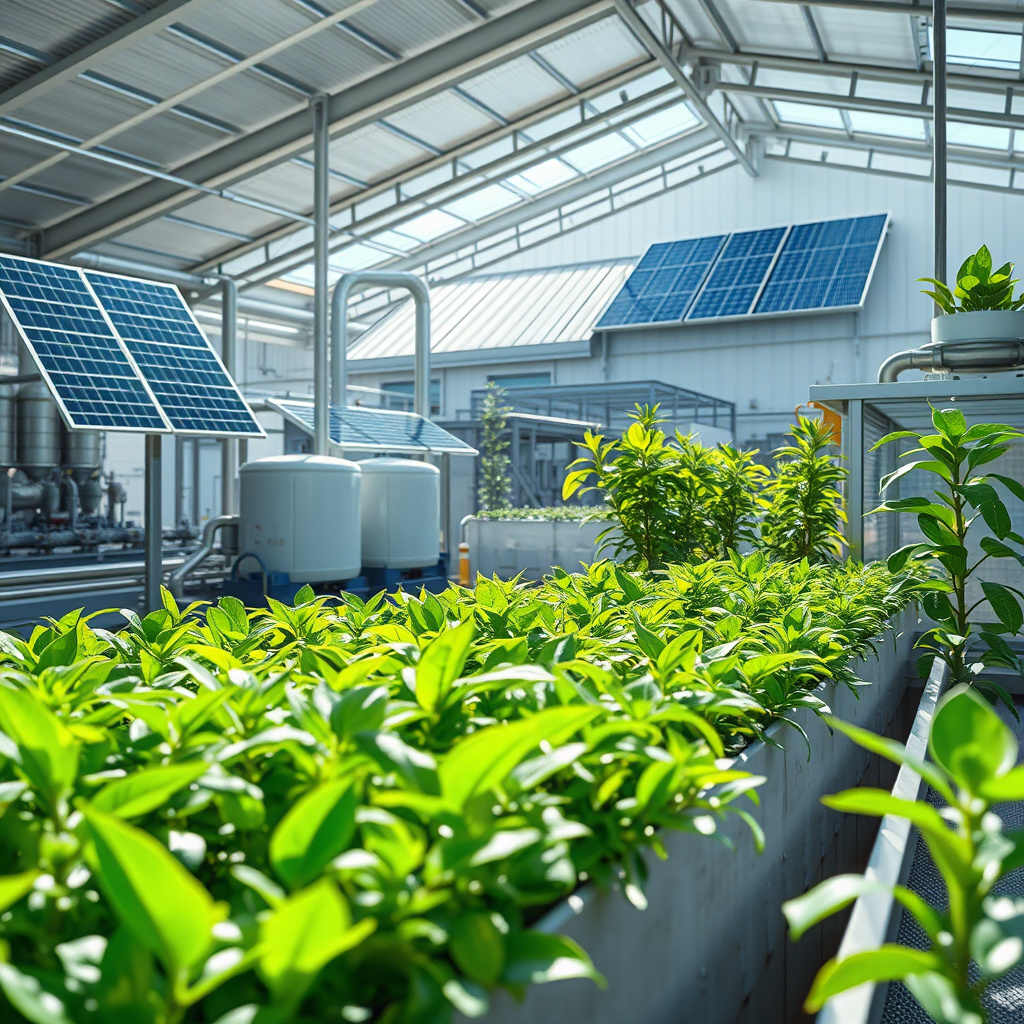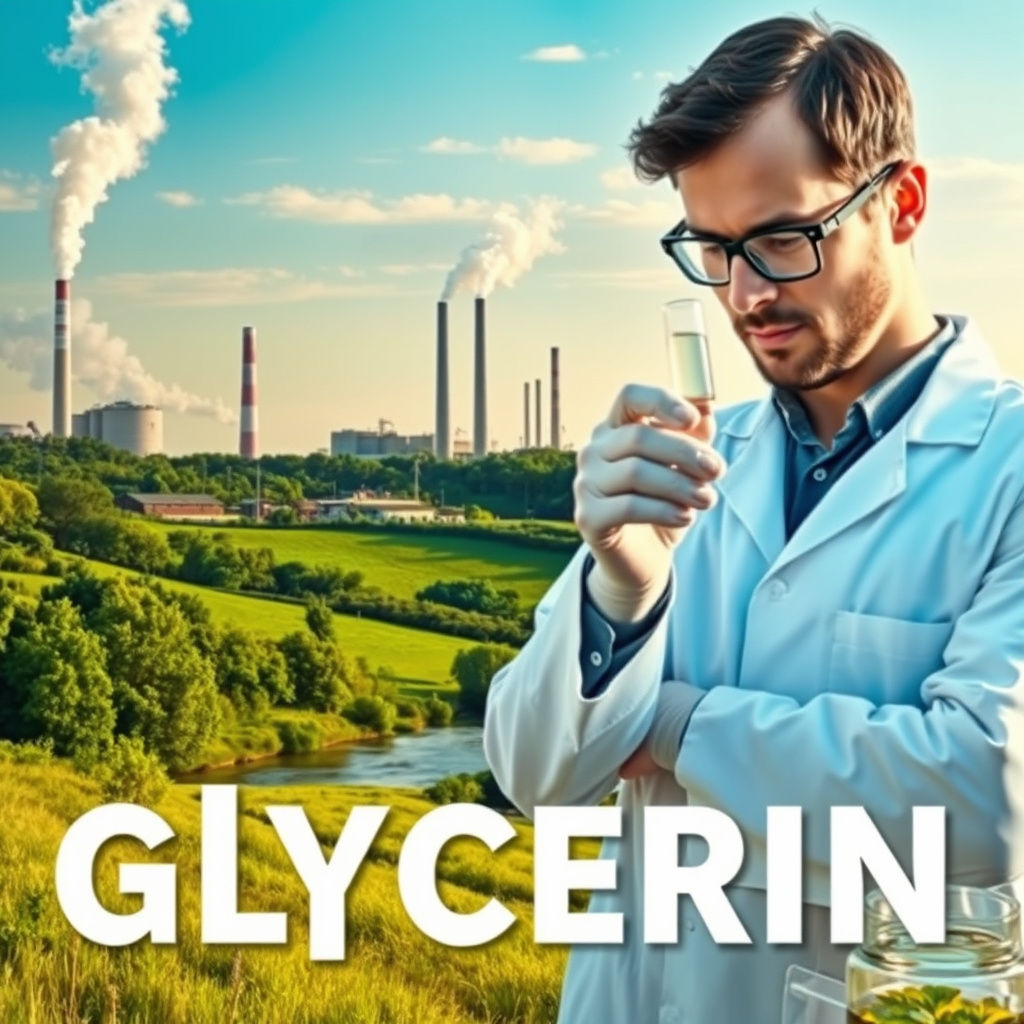How can glycerin production be made more sustainable? This involves implementing eco-friendly practices to reduce environmental impact.
How can glycerin production be made more sustainable? This question is crucial for companies seeking reliable glycerin suppliers.
In this post, you’ll discover innovative methods and technologies that can help manufacturers minimize their environmental footprint while maintaining quality.
Join us as we explore sustainable practices that not only benefit the planet but also enhance your business’s credibility and appeal.
Unraveling the Secrets of Sustainable Glycerin Production
As the world shifts towards more environmentally friendly practices, understanding how to produce glycerin sustainably has become increasingly important. Glycerin, a versatile compound used in cosmetics, food products, and pharmaceuticals, can be produced through various methods. However, the challenge lies in making this production process more eco-friendly. In the present moment, industries are exploring innovative ways to minimize their environmental impact while meeting the growing demand for high-quality glycerin.
Understanding the Current Production Methods
Traditionally, glycerin is a byproduct of the biodiesel manufacturing process. While this method is more sustainable compared to petroleum-based alternatives, it still poses challenges. The use of large quantities of vegetable oils can lead to deforestation and biodiversity loss. To combat these issues, many manufacturers are seeking alternative raw materials that ensure a more responsible sourcing process.
Innovative Approaches to Glycerin Production
One promising avenue is the use of waste materials, such as food waste and agricultural byproducts, to produce glycerin. By utilizing these resources, glycerin manufacturers can reduce waste while creating a valuable product. This method not only supports the circular economy but also helps to lower the overall carbon footprint associated with glycerin production.
- Utilization of Bio-based Feedstocks: Sourcing glycerin from bio-based feedstocks that are certified sustainable can significantly enhance the sustainability of the production process.
- Advancements in Technology: New technologies in enzymatic and microbial fermentation are being investigated to convert sugars and organic materials into glycerin, making the process cleaner and more efficient.
- Optimization of Processes: Streamlining production processes to minimize energy consumption and waste generation is crucial for a more sustainable approach.
Collaboration and Transparency in Sourcing
For companies looking to buy glycerin online or engage with a reliable glycerin supplier, transparency in sourcing is essential. Understanding where and how glycerin is produced can help companies ensure they are making environmentally responsible choices. By partnering with suppliers committed to sustainable practices, businesses can contribute to the demand for ethical glycerin sourcing.
The Role of Certification in Sustainable Glycerin
Certification programs play a vital role in promoting sustainability within the glycerin market. Certifications can help consumers and businesses identify high-quality glycerin that meets strict environmental standards. When looking for a food grade glycerin supplier or a glycerin wholesale provider, checking for certifications can ensure that the product is produced responsibly.
As the industry moves forward, the focus on sustainable glycerin production will only intensify. This ongoing commitment to sustainability not only satisfies consumer demand but also helps protect the planet for future generations. It is an exciting time for glycerin manufacturers and suppliers as they adapt to the changing landscape, ensuring that their practices align with the principles of sustainability.
The Role of Renewable Resources in Glycerin Creation
Understanding Glycerin
Glycerin, a versatile compound, plays a crucial role in various industries, from cosmetics to food. As we explore the production of glycerin, it becomes essential to consider the Sustentabilidade of its sources. With growing concerns over environmental impacts, the shift towards renewable resources is not just beneficial but necessary.
Renewable Resources in Glycerin Production
Traditionally, glycerin has often been derived from fossil fuels, which raises significant environmental concerns. However, the advent of renewable resources offers a promising alternative. By leveraging vegetable oils, such as palm, soy, and canola, glycerin manufacturers can produce high-quality glycerin in a more sustainable manner. This approach not only reduces the carbon footprint associated with glycerin production but also promotes a circular economy, where waste products from other processes can be repurposed.
- Vegetable Oils: Sourced from sustainable farming practices, these oils are used to create bulk glycerin supply efficiently.
- Waste Utilization: By using by-products from biodiesel and biofuel production, we can further enhance the sustainability of glycerin sourcing.
The Benefits of Sustainable Glycerin Production
Incorporating renewable resources in glycerin creation has multiple advantages. For one, it aligns with the global push towards Sustentabilidade, helping to reduce reliance on non-renewable sources. Additionally, this shift can lead to improved glycerin pricing, making it more accessible for various applications, including cosmetics and food-grade uses.
As consumers increasingly demand products that are both effective and environmentally friendly, the role of a glycerin supplier who prioritizes sustainable practices becomes more critical. Companies can now buy glycerin online from those committed to ethical sourcing and production methods.
Looking Ahead
With the ongoing advancements in technology and methods for glycerin production, the future looks promising. Innovative processes are being developed to optimize the yield from renewable resources, ensuring that the market can meet the growing demand for high-quality glycerin. This progress not only benefits manufacturers and suppliers but also consumers who seek sustainable options in their products.
By focusing on renewable resources, the glycerin industry is taking vital steps towards creating a more sustainable future, where the benefits of glycerin can be enjoyed without compromising the health of our planet.
Innovative Technologies Driving Eco-Friendly Glycerin Solutions
As the focus on environmental preservation intensifies, the demand for eco-friendly solutions in various industries grows. Among these solutions, the production of glycerin has seen significant innovations aimed at enhancing its sustainability. The evolution of technology has opened new avenues for sourcing and producing this versatile compound, making it not only more efficient but also environmentally conscious.
Biotechnology and Fermentation Processes
One of the most exciting advancements in the field of glycerin production is the use of biotechnology. By employing microorganisms in fermentation processes, manufacturers can convert renewable resources into high-quality glycerin. This method not only reduces reliance on fossil fuels but also utilizes agricultural by-products, aligning with the principles of circular economy.
- Microbial fermentation helps to create a bio-based glycerin that meets the growing demand for natural ingredients in the cosmetics and food industries.
- These processes can be optimized to increase yield while lowering emissions, which is crucial for companies aiming to improve their carbon footprint.
Advanced Extraction Techniques
Another area where technology shines is in the extraction of glycerin from plant sources, particularly in the production of vegetable glycerin. Modern extraction techniques, such as cold pressing and supercritical fluid extraction, ensure that the glycerin extracted retains its purity and quality. For glycerin suppliers, this means they can offer products that align with consumer preferences for clean and green ingredients.
Waste Valorization
In the quest for sustentabilidade, companies are increasingly turning to waste valorization. This approach involves utilizing by-products from other industries to create glycerin. For instance, waste oils from food processing can be transformed into glycerin, effectively reducing waste while producing a valuable resource. This not only supports a sustainable supply chain but also provides a competitive edge in glycerin pricing.
Smart Manufacturing and Digitalization
The integration of smart manufacturing and digital technologies is revolutionizing how glycerin is produced. Automation and data analytics enable manufacturers to monitor processes in real-time, optimize operations, and reduce energy consumption. By leveraging these technologies, glycerin manufacturers can enhance efficiency and ensure that their production methods are aligned with sustainability goals.
Eco-Friendly Packaging Solutions
Finally, as the market for glycerin for cosmetics and other applications grows, so does the need for eco-friendly packaging. Innovative materials that are biodegradable or made from recycled content are becoming more prevalent. This shift not only appeals to environmentally conscious consumers but also aligns with broader initiatives for reducing plastic waste.
As we look ahead, the intersection of innovation and sustainability in the production of glycerin is a promising field. With advancements in biotechnology, extraction techniques, waste valorization, smart manufacturing, and packaging, the future of this essential compound is more sustainable than ever, paving the way for a greener planet.
Best Practices for Sustainable Glycerin Manufacturing
In the quest for a more eco-friendly future, the production of glycerin stands out as a significant area for improvement. As industries strive for greater sustentabilidade, adopting best practices in glycerin manufacturing is essential. By focusing on environmentally friendly methods, producers can not only meet market demands but also contribute to a healthier planet.
Utilizing Renewable Feedstocks
One of the foremost practices is the use of renewable feedstocks. Many glycerin manufacturers are shifting towards sourcing their raw materials from sustainable agricultural practices. By using vegetable oils and fats, such as palm, soy, or rapeseed, these companies can significantly reduce their carbon footprint. It’s important to ensure that these materials are sourced responsibly, prioritizing suppliers who adhere to ethical and sustainable farming practices.
Implementing Energy-Efficient Processes
Energy consumption plays a crucial role in the sustainability of glycerin production. Manufacturers are increasingly adopting energy-efficient technologies that minimize waste and reduce energy usage. This includes the use of advanced distillation methods and heat recovery systems that allow for the recycling of energy. By optimizing production processes, glycerin suppliers can lower operational costs while also benefiting the environment.
Water Conservation Techniques
Water is a vital resource in glycerin manufacturing, and its conservation is critical for sustainable practices. Implementing closed-loop water systems can drastically reduce water usage and the impact on local water supplies. This approach not only conserves water but also minimizes wastewater production. Companies focusing on these techniques demonstrate a commitment to both glycerin quality and environmental stewardship.
Adopting Circular Economy Principles
Integrating circular economy principles into glycerin production can also enhance sustainability. This involves creating systems where waste products are repurposed or recycled into the production process. For instance, glycerin by-products from biodiesel production can be reintegrated into new glycerin manufacturing, reducing waste and promoting resource efficiency. By embracing this model, glycerin manufacturers can contribute to a more sustainable industry.
Transparency and Traceability
In the modern market, consumers are increasingly interested in where and how their products are made. Glycerin suppliers can enhance their sustainability efforts by ensuring transparency in their sourcing and manufacturing processes. Implementing traceability systems allows companies to provide detailed information about their raw materials, production methods, and sustainability standards. This builds trust with customers and promotes a culture of accountability in the industry.
Engaging in Continuous Improvement
Finally, the path to sustainable glycerin production is an ongoing journey. Manufacturers should embrace a culture of continuous improvement, regularly assessing and refining their practices. This includes investing in research and development to explore innovative technologies and practices that can further enhance sustainability. By staying proactive, glycerin manufacturers can lead the way in creating a more sustainable future.
Global Trends in Sustainable Glycerin Sourcing
As the world increasingly focuses on sustainability, the demand for eco-friendly products has surged, and this trend is evident in the glycerin industry. Today, companies are exploring innovative ways to source glycerin sustainably, aligning with the broader movement towards environmental responsibility. One of the most notable trends is the shift towards using renewable resources for glycerin production. By leveraging plant-based materials, manufacturers can minimize their carbon footprint while also ensuring the quality and safety of the final product.
Consumer Preferences Driving Change
In the present market, consumers are becoming more conscious of their purchasing decisions. This shift in consumer behavior is prompting brands to seek suppliers who prioritize sustainability in their operations. As a result, many glycerin suppliers are adopting transparent sourcing practices, allowing customers to trace the origin of the glycerin they purchase. This transparency not only builds trust but also encourages responsible consumption.
Innovations in Glycerin Production
Technological advancements play a crucial role in enhancing the sustainability of glycerin production. Innovative processes, such as enzymatic methods and biotechnological approaches, are emerging as viable alternatives to traditional techniques. These methods not only reduce waste but also improve efficiency in glycerin extraction. Companies can now source high-quality glycerin while minimizing their environmental impact.
Collaboration and Best Practices
Collaboration among industry stakeholders is another key trend shaping sustainable glycerin sourcing. Manufacturers, suppliers, and researchers are working together to share best practices and develop guidelines for sustainable production. This collaborative approach fosters innovation and encourages the adoption of eco-friendly practices across the supply chain. For instance, many companies are now focusing on waste minimization and energy efficiency, ensuring that their glycerin manufacturing processes are as green as possible.
The Future of Glycerin Sourcing
As the emphasis on sustainability grows, the glycerin industry is expected to evolve further. The integration of circular economy principles, where waste is repurposed and resources are reused, is likely to become a standard practice. This shift not only benefits the environment but also enhances the economic viability of glycerin production. Companies that adapt to these changes will not only meet consumer demands but also position themselves as leaders in the market.
- Glycerin sourced from sustainable practices is likely to see increased demand in various sectors, including cosmetics and food.
- Brands looking to buy glycerin online are encouraged to choose suppliers who demonstrate a commitment to sustainability.
- With the growing availability of bulk glycerin supply, manufacturers can easily find high-quality, eco-friendly options for their products.
In this evolving landscape, the focus on sustainability is not merely a trend but a necessary shift towards a more responsible future. As more companies recognize the importance of sourcing glycerin sustainably, the industry will continue to innovate, ensuring that glycerin remains a versatile and essential ingredient in various applications.
The Future of Glycerin: Embracing Sustainability for Business Growth
As businesses navigate the complexities of today’s world, the demand for Glicerina is evolving alongside heightened expectations for Sustentabilidade. Companies are increasingly recognizing that embracing sustainable practices is not just a trend but a necessity for long-term success. The production of Glicerina is at a pivotal point where innovation meets responsibility, opening doors for those who choose to adapt.
Understanding Market Dynamics
In the current landscape, consumers are more informed and selective about the products they purchase. This shift has led to a surge in the demand for eco-friendly alternatives across various industries. The need for high-quality glicerina that is not only effective but also sustainably sourced is greater than ever. As a result, businesses are re-evaluating their supply chains, seeking glicerina suppliers that prioritize environmental responsibility without compromising on quality.
Integrating Renewable Resources
A key aspect of sustainable glicerina production involves integrating renewable resources. Many manufacturers are exploring plant-based feedstocks, which can significantly reduce their carbon footprint. By sourcing materials from sustainable agricultural practices, businesses can not only enhance their product offerings but also contribute to a healthier planet. This approach resonates with environmentally conscious consumers and can foster brand loyalty.
Innovative Manufacturing Practices
The adoption of innovative technologies is also reshaping the landscape of glicerina production. Advanced manufacturing processes, such as green chemistry techniques, are minimizing waste and energy consumption. Companies that invest in these technologies stand to benefit from lower operational costs and improved efficiency. Furthermore, these practices position them as leaders in the market, appealing to a growing consumer base that values sustainability.
Creating Strong Supply Chains
In the quest for Sustentabilidade, establishing robust supply chains is essential. Businesses committed to ethical sourcing must collaborate closely with glicerina suppliers who share their vision for sustainability. This collaboration can lead to more transparent practices and better resource management. Companies that prioritize these relationships not only enhance their operational resilience but also demonstrate their commitment to ethical practices in the eyes of consumers.
Responding to Global Trends
The global trend toward sustentabilidade is influencing regulatory frameworks and consumer preferences alike. As countries implement stricter environmental regulations, businesses that proactively adapt will be well-positioned to thrive. Staying ahead of these trends means not only complying with regulations but also embracing them as opportunities for innovation. Companies that offer bulk glycerin supply and prioritize eco-friendly practices are likely to see a positive impact on their market share.
In a world where consumers are increasingly prioritizing sustainability, the future of glicerina lies in the hands of those willing to adapt and innovate. By focusing on responsible sourcing, integrating renewable resources, and embracing new technologies, businesses can not only meet the demands of today but also pave the way for future growth. This commitment to Sustentabilidade is not just an ethical choice; it’s a strategic one that can drive business success in an ever-evolving marketplace.





